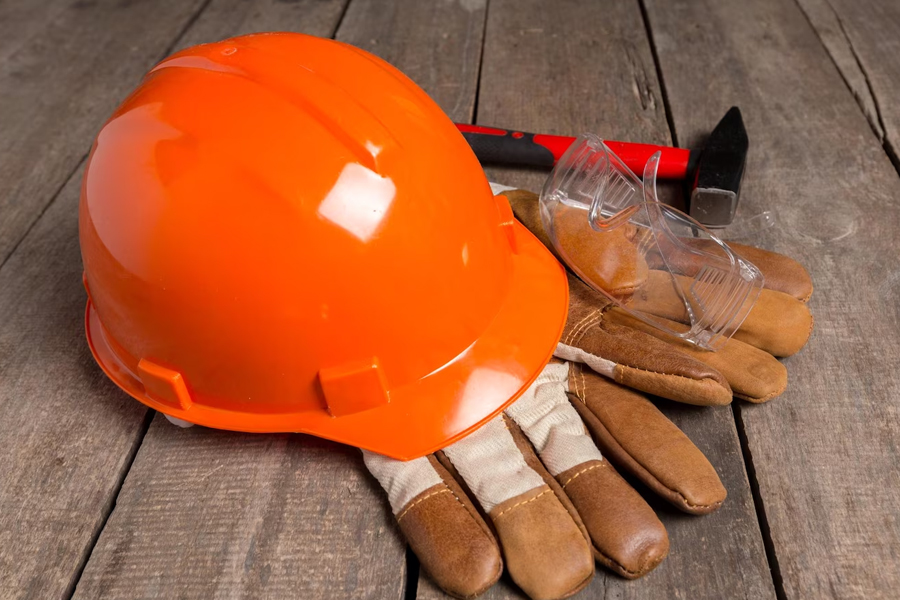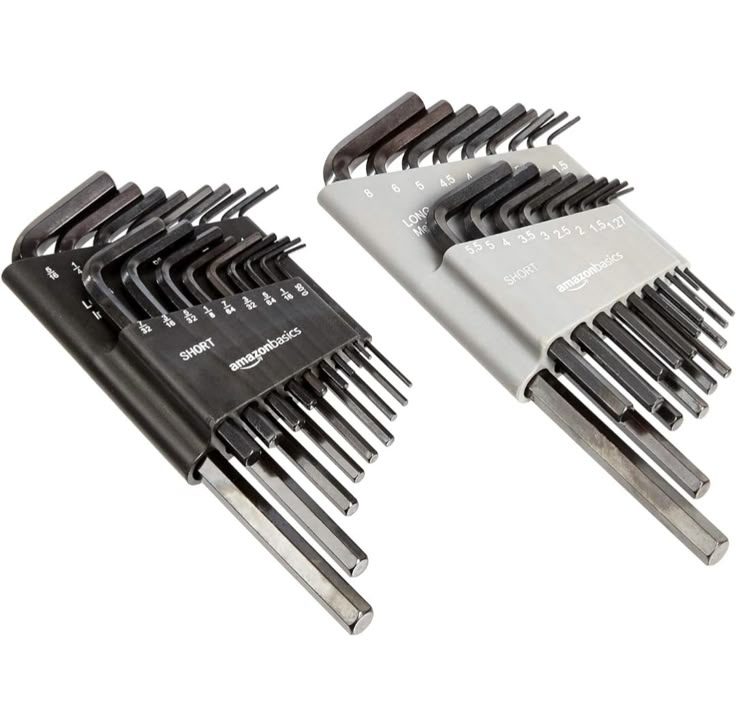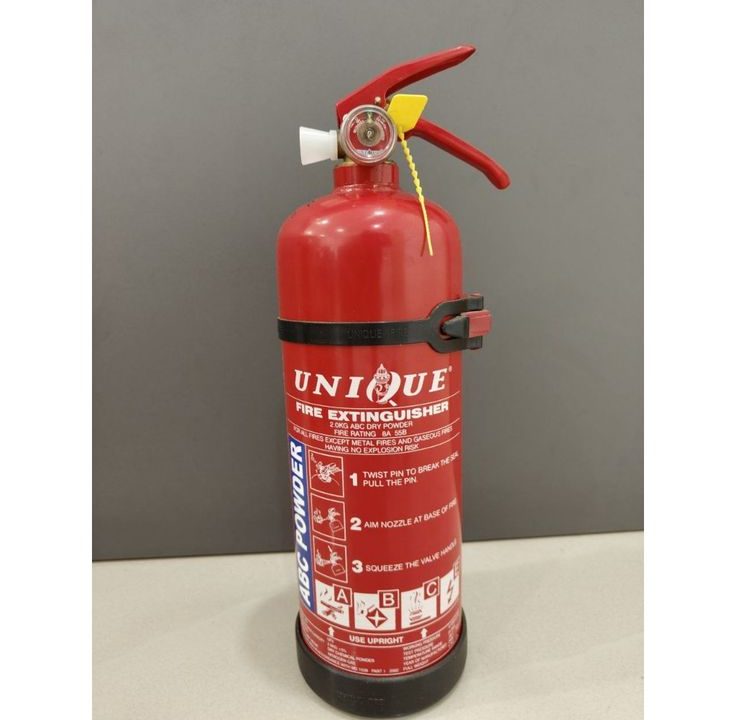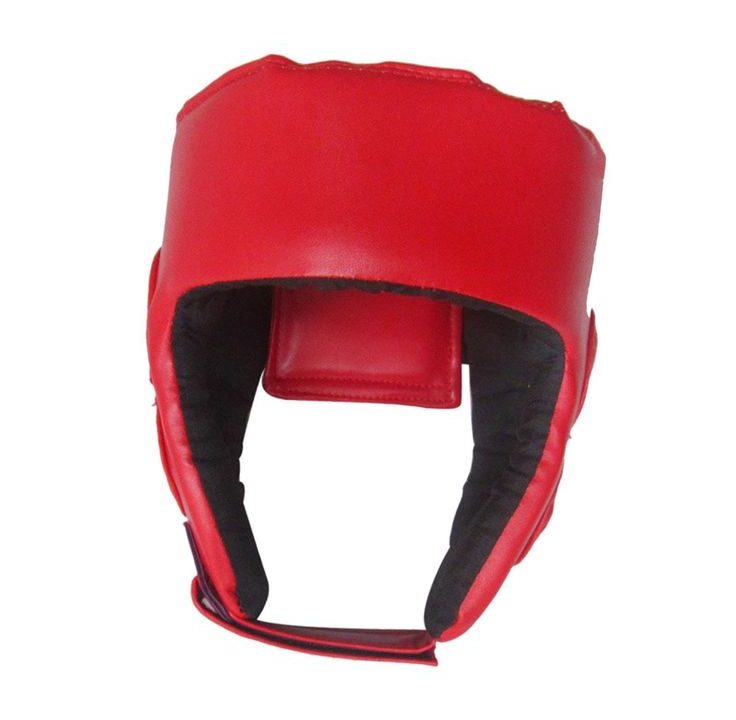The Complete Guide to Personal Protective Equipment: Ensuring Safety in Every Environment

What Are the Common Mistakes People Make When Using a Fire Extinguisher
June 14, 2024
Understanding Fall Protection Equipment: Essential Safety Measures for Elevated Work Environments
July 19, 2024Welcome to our comprehensive guide on personal protective equipment (PPE)! Whether you’re working on a construction site, in a laboratory, or anywhere in between, PPE is essential for safeguarding against potential hazards.
Essential Takeaways:
1. Proper Fit and Comfort: Ensuring PPE fits well enhances both comfort and protection. Employees should try different sizes and models to find the best fit.
2. Compliance with Safety Standards: Choose PPE that meets relevant safety standards (e.g., ANSI, OSHA) to ensure adequate protection against workplace hazards.
3. Regular Maintenance and Inspection: Regularly inspect and maintain PPE to ensure it remains effective. Clean, store, and replace PPE as recommended by the manufacturer to prolong its lifespan and effectiveness.
This equipment serves as a crucial barrier between you and the dangers present in various work environments. From preventing injuries to ensuring compliance with safety regulations, PPE plays a pivotal role in maintaining a safe and productive workplace.
What is Personal Protective Equipment (PPE)?
Personal protective equipment (PPE) encompasses a range of items designed to protect individuals from workplace hazards. The purpose of PPE is to minimize exposure to risks that can cause serious injuries or illnesses. PPE includes items such as helmets, gloves, eye protection, high-visibility clothing, safety footwear, and respiratory protective equipment.
Different types of PPE are tailored for specific environments and tasks. For example, construction workers might wear hard hats and steel-toed boots, while healthcare professionals use gloves and face masks. The key is to choose the appropriate PPE for the specific hazards present in your work environment.
Why is PPE Important?
PPE is a critical component in maintaining safety across various industries. It significantly reduces the risk of injuries by providing a protective barrier against physical, chemical, and biological hazards. For instance, wearing a helmet can prevent head injuries from falling objects, while gloves protect hands from harmful substances.
The importance of PPE is underscored by numerous statistics and real-life examples. According to the Occupational Safety and Health Administration (OSHA), proper use of PPE can prevent thousands of workplace injuries and fatalities each year. For example, the use of helmets in construction has been shown to reduce head injuries by 60%.
Moreover, PPE is essential for compliance with safety regulations. Organizations like OSHA and the National Institute for Occupational Safety and Health (NIOSH) set standards for PPE use to ensure worker safety. Failure to comply with these standards can result in hefty fines and legal consequences, highlighting the importance of proper PPE usage.
Types of Personal Protective Equipment
Head Protection
Head protection is vital in environments where there is a risk of falling objects, bumping into fixed objects, or coming into contact with electrical hazards. The most common types of head protection are helmets, hard hats, and bump caps.
- Helmets: Typically used in construction and industrial settings, helmets provide robust protection against impacts.
- Hard Hats: These are designed to protect against falling objects and electrical hazards. They are commonly used in construction, mining, and utility work.
- Bump Caps: Lighter than hard hats, bump caps are used in environments where there is a risk of minor head bumps and scrapes.
When selecting head protection, look for features like adjustable suspension systems, comfort liners, and proper ventilation. Ensure that the headgear meets the relevant safety standards for your industry.
Eye and Face Protection
Eye and face protection are crucial for safeguarding against hazards such as flying debris, chemical splashes, and harmful radiation. Common types include goggles, safety glasses, and face shields.
- Goggles: Provide a secure fit around the eyes, protecting against dust, chemicals, and impact.
- Safety Glasses: Often used in manufacturing and laboratory settings, safety glasses protect against flying debris and minor splashes.
- Face Shields: Offer full-face protection and are typically used in conjunction with other eye protection for tasks involving grinding, chemical handling, or welding.
When choosing eye and face protection, consider the specific hazards present in your environment. Ensure that the equipment fits properly and is comfortable to wear for extended periods.
Hearing Protection
Exposure to loud noise can lead to permanent hearing loss, making hearing protection essential in noisy environments. Earplugs and earmuffs are the two primary types of hearing protection.
- Earplugs: Made of foam, silicone, or other materials, earplugs fit directly into the ear canal to block out noise.
- Earmuffs: Cover the entire ear and are often used in combination with earplugs for maximum protection.
Proper fitting is crucial for the effectiveness of hearing protection. Earplugs should fit snugly in the ear canal, and earmuffs should create a tight seal around the ears.
Respiratory Protection
Respiratory protection is necessary in environments where there are airborne hazards such as dust, fumes, vapours, and harmful gases. Types of respiratory protection include respirators, masks, and breathing apparatuses.
- Respirators: Designed to filter out harmful particles, respirators come in various forms, including disposable, half-face, and full-face models.
- Masks: Simple dust masks provide basic protection, while more advanced masks offer higher levels of filtration.
- Breathing Apparatuses: Used in highly hazardous environments, these provide a clean air supply through an external source.
Selecting the appropriate level of respiratory protection is crucial. Consider the specific hazards and ensure that the equipment meets the necessary safety standards.
Hand and Arm Protection
Hands and arms are frequently exposed to a variety of hazards, making protection essential. Gloves and arm guards are the most common types of hand and arm protection.
- Gloves: Available in materials such as latex, nitrile, leather, and Kevlar, gloves protect against chemicals, cuts, abrasions, and heat.
- Arm Guards: Offer additional protection for the arms, often used in tasks involving welding, glass handling, or metalwork.
Choosing the right material for the specific hazard is critical. For example, nitrile gloves are suitable for chemical handling, while leather gloves are ideal for heavy-duty work.
Foot and Leg Protection
Foot and leg protection is crucial in environments where there is a risk of falling objects, punctures, slips, and electrical hazards. Common types include steel-toed boots, slip-resistant shoes, and shin guards.
- Steel-Toed Boots: Protect against heavy impacts and compression.
- Slip-Resistant Shoes: Essential in wet or oily environments to prevent slips and falls.
- Shin Guards: Offer additional protection for the lower legs in tasks involving heavy machinery or tools.
When selecting foot and leg protection, consider the specific hazards and ensure that the footwear is comfortable and meets the relevant safety standards.
Body Protection
Body protection is necessary in environments where there is exposure to chemical spills, extreme temperatures, or sharp objects. Coveralls, vests, and aprons are common types of body protection.
- Coveralls: Provide full-body protection and are often used in chemical handling or hazardous material cleanup.
- Vests: High-visibility vests are essential in low-light environments to ensure workers are easily seen.
- Aprons: Protect against splashes and sharp objects, commonly used in laboratories and workshops.
Choosing the right material and ensuring proper fit are key to effective body protection. Look for equipment that meets industry-specific safety standards.
Fall Protection
Fall protection is essential in construction, maintenance, and other high-risk industries where workers operate at heights. Harnesses, lanyards, and guardrails are common types of fall protection equipment.
- Harnesses: Distribute the force of a fall across the body and are used in combination with other fall protection systems.
- Lanyards: Connect the harness to a secure anchor point and absorb the energy of a fall.
- Guardrails: Provide a physical barrier to prevent falls from elevated surfaces.
Selecting and using fall protection equipment properly is crucial for preventing serious injuries. Ensure that the equipment fits well and meets relevant safety standards.
Personal protective equipment (PPE) is an essential part of ensuring safety in the workplace. Whether you’re working in construction, healthcare, manufacturing, or any other field with potential hazards, choosing the right PPE and using it correctly can significantly reduce the risk of injury and illness. In this guide, we’ll walk you through how to select, use, and maintain PPE effectively to create a safe work environment.
Selecting the Right PPE
Assessing Workplace Hazards
Before you can select the right PPE, you need to conduct a thorough hazard assessment of your workplace. Here’s a step-by-step guide to help you identify potential risks and determine the necessary PPE:
- Identify Hazards: Walk through your workplace and note any potential hazards. These could include physical dangers (e.g., falling objects, sharp edges), chemical exposures (e.g., solvents, acids), biological risks (e.g., bacteria, viruses), and environmental conditions (e.g., noise, extreme temperatures).
- Consult Safety Data Sheets (SDS): For chemical hazards, review the SDS for information on required PPE.
- Evaluate the Tasks: Consider the specific tasks employees perform and the risks associated with each. For example, welding requires eye protection against sparks and bright light, while handling chemicals necessitates gloves and protective clothing.
- Involve Employees: Engage with employees to understand the challenges they face and their PPE needs. They can provide valuable insights into the practical aspects of using different types of PPE.
- Document Findings: Record the identified hazards and recommended PPE in a comprehensive hazard assessment report.
- Review and Update Regularly: Hazard assessments should be reviewed periodically and updated whenever there are changes in processes, materials, or work conditions.
Ensuring Proper Fit and Comfort
The effectiveness of PPE hinges on proper fit and comfort. Ill-fitting equipment can not only be uncomfortable but also compromise protection. Here’s how to ensure PPE fits well and provides maximum protection:
- Sizing and Adjustments: PPE should come in various sizes to accommodate different body types. For example, gloves should fit snugly but not restrict movement, and helmets should have adjustable straps for a secure fit.
- Trial and Error: Allow employees to try on different sizes and models of PPE to find the most comfortable and effective fit. This is particularly important for items like respirators, which must form a tight seal to be effective.
- Balancing Comfort and Protection: While comfort is important, it should not come at the expense of protection. For instance, lightweight gloves may be more comfortable, but they must still provide adequate protection against the specific hazards present.
- Employee Feedback: Regularly seek feedback from employees about the fit and comfort of their PPE. Make adjustments based on their input to improve compliance and safety.
Quality and Standards
Choosing high-quality PPE that meets safety standards and certifications is crucial for ensuring protection. Here’s what you need to know:
- Safety Standards: Look for PPE that complies with relevant safety standards and certifications. Common certifications include:
- ANSI (American National Standards Institute): Sets standards for a wide range of PPE, including eye protection, head protection, and high-visibility clothing.
- OSHA (Occupational Safety and Health Administration): Enforces safety standards and provides guidelines for PPE usage.
- NIOSH (National Institute for Occupational Safety and Health): Certifies respiratory protection equipment.
- Benefits of High-Quality PPE: Investing in high-quality PPE ensures better protection, durability, and comfort. High-quality PPE is less likely to fail and can withstand more wear and tear, ultimately providing better value over time.
- Supplier Reputation: Choose reputable suppliers known for producing reliable and certified PPE. Research reviews and ask for recommendations to ensure you’re purchasing from trusted sources.
Proper Use and Maintenance of PPE
How to Use PPE Correctly
Using PPE correctly is as important as selecting the right equipment. Here are detailed instructions on the proper usage of different types of PPE:
- Donning (Putting On) PPE:
- Hand Protection: Ensure hands are clean and dry before putting on gloves. Pull gloves on, smoothing them out to avoid wrinkles or gaps.
- Eye Protection: Adjust goggles or safety glasses to fit snugly and securely. Ensure no gaps around the edges.
- Respirators: Place the respirator over your nose and mouth, securing the straps behind your head. Perform a fit check by inhaling and exhaling to ensure a proper seal.
- Using PPE: Follow manufacturer instructions for the proper use of each type of PPE. For example, avoid touching the outside of gloves or the front of masks once they are in use.
- Doffing (Removing) PPE: Remove PPE carefully to avoid contamination:
- Gloves: Peel off one glove from the wrist, turning it inside out. Hold the removed glove in the other gloved hand and peel off the second glove over the first.
- Eye Protection: Remove by handling the straps or arms, avoiding contact with the lenses.
- Respirators: Remove by handling the straps, starting from the bottom strap.
Maintenance and Inspection
Regular maintenance and inspection of PPE are essential to ensure it remains effective. Here are guidelines to help you maintain and inspect your PPE:
- Cleaning: Follow the manufacturer’s instructions for cleaning each type of PPE. For example, safety glasses can be cleaned with a mild soap solution, while respirators may require disassembly and cleaning of individual components.
- Storing: Store PPE in a clean, dry place away from direct sunlight and extreme temperatures. Use designated storage areas or containers to keep PPE organized and accessible.
- Inspecting: Regularly inspect PPE for signs of damage or wear. Look for cracks, tears, or other defects that could compromise protection. For example, check helmets for dents and gloves for punctures.
- Replacing PPE: Replace PPE immediately if it shows signs of damage or wear. Follow the manufacturer’s recommendations for the lifespan of each item. For instance, disposable gloves should be replaced after each use, while hard hats may need to be replaced every few years.
Creating a Safety-First Culture
Training and Education
Proper training and education are crucial for ensuring employees use PPE correctly and consistently. Here’s how to develop an effective training program:
- Comprehensive Training: Provide detailed training on the correct use, maintenance, and limitations of PPE. Include hands-on demonstrations and practice sessions.
- Regular Updates: Conduct regular safety training sessions to keep employees updated on new PPE, safety standards, and best practices. Refresh training periodically to reinforce key concepts.
- Interactive Sessions: Use interactive methods such as workshops, role-playing, and quizzes to engage employees and reinforce learning.
Encouraging Safe Practices
Creating a safety-first culture involves more than just providing PPE. Here are strategies to encourage safe practices among employees:
- Leadership Role: Leaders and managers should lead by example, consistently using PPE and promoting its importance. Their behaviour sets the tone for the rest of the team.
- Safety Incentives: Implement incentive programs to reward employees for consistent use of PPE and adherence to safety protocols. Recognize and celebrate individuals who prioritize safety.
- Open Communication: Foster an environment where employees feel comfortable reporting safety concerns and suggesting improvements. Address issues promptly and make necessary adjustments.
- Regular Audits: Conduct regular safety audits to ensure compliance with PPE usage and identify areas for improvement. Use audit findings to enhance safety protocols and training programs.
Conclusion
Selecting and using the right personal protective equipment is essential for ensuring safety in every environment. By conducting thorough hazard assessments, ensuring proper fit and comfort, choosing high-quality PPE that meets safety standards, and fostering a safety-first culture through training and encouragement, you can significantly reduce the risk of workplace injuries and illnesses.
Remember, the safety of your team depends on the correct selection, usage, and maintenance of PPE. Prioritize safety, stay informed, and regularly assess your PPE needs to maintain a safe and productive work environment.
Call to Action
For more detailed information and resources on personal protective equipment, visit our website. Explore our extensive range of PPE products and take the first step towards enhancing your safety at work and at home. Your safety is our priority.
FAQs
1. What are the legal requirements for using PPE in the workplace?
Employers must provide PPE free of charge to employees exposed to workplace hazards. PPE should meet safety standards and be maintained in a clean and reliable condition.
2. How often should PPE be inspected and replaced?
PPE should be inspected before each use and regularly maintained according to manufacturer guidelines. Replace PPE immediately if it shows signs of damage or wear.
3. What should employees do if their PPE doesn’t fit properly?
Employees should inform their supervisor immediately. Properly fitting PPE is essential for effective protection against workplace hazards.
4. Can PPE be reused after cleaning?
Yes, some types of PPE, such as goggles and reusable gloves, can be cleaned and reused if maintained properly. Follow specific cleaning instructions provided by the manufacturer.
5. How can employees be encouraged to use PPE consistently?
Encourage a safety culture through regular training, leadership by example, and recognition of safe practices. Provide comfortable and well-fitted PPE to enhance compliance.




